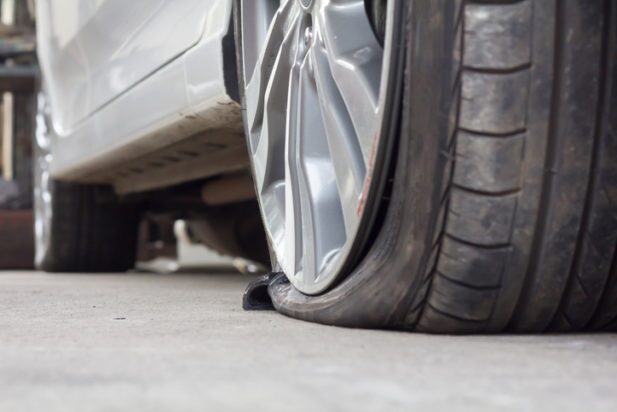What To Do If You Blow A Tire On The Highway

One of the most harrowing experiences that can occur while driving on a highway is having a blown tire. While this can be a potentially dangerous situation, there are important steps to consider that may reduce the dangers and avoid injuries to the driver and passengers.
The most important step is prevention. Making sure that your vehicle has routine maintenance check-ups and that the tires are checked regularly is important. Many tire failures are the result of improper tire pressure, so, it’s especially important to have the tire pressure checked regularly. Check for signs of wear and damage to your tires. Older, faulty and worn tires can be hazardous and increase the risk of tire failure.
Have an emergency car kit and keep reflective lights, flares or safety cones in your vehicle. Have roadside assistance for your vehicle for any roadside emergencies.
In the event you do experience a blown tire while driving on the highway, many experts suggest the following:
• Avoid slamming your brakes. Slamming your brakes may cause you to lose proper control of the vehicle and potentially cause a collision.
• Maintain a firm grip with both hands on your steering wheel. Try to keep the vehicle in control as it may pull to one side.
• Let your vehicle slow down gradually and pull over to the side of the road once you have reached a safe speed.
• Turn on the vehicle’s emergency flashers.
Never exit your vehicle unless you are absolutely certain it is safe to do so. Highways can be very busy with vehicles travelling at high rates of speed. It is recommended to stay in the vehicle as getting out of a vehicle on the highway can be extremely dangerous. Many roadside fatalities occur when people exit their vehicles in unsafe conditions. The best plan is to stay in your vehicle, call roadside assistance or a tow truck or police and wait for their instructions. If you do not have a phone, wait for the police or an emergency vehicle. Remember to activate your hazard lights.
If you are out of harm’s way, you may wish to assess the situation to decide whether you can exit the vehicle and deploy flares or safety cones. If necessary, only change your tire if you have the proper experience, equipment and are a safe distance from traffic. Remember, the safety of you and your passengers is paramount. Always properly assess the situation before exiting the vehicle.
Contributors

Bill joined Oatley Vigmond in 2008, bringing with him extensive and varied experience working in the fields of rehabilitation and insurance. Now, he’s responsible for helping clients obtain accident benefits from their own car insurance company. He also helps assemble a reliable community rehabilitation and long-term care team for our clients.
